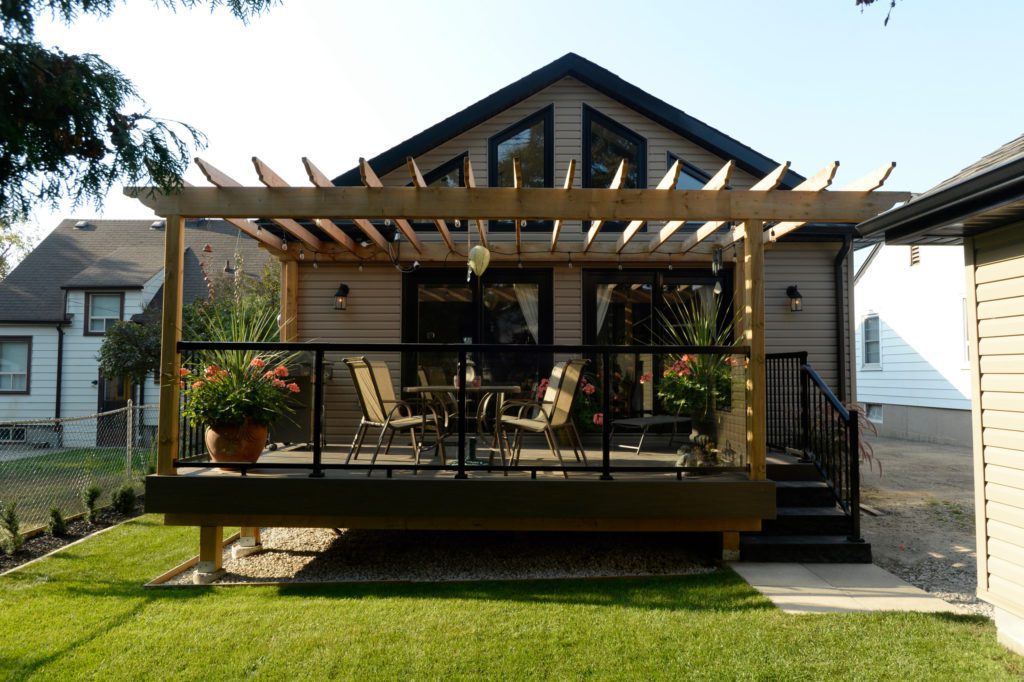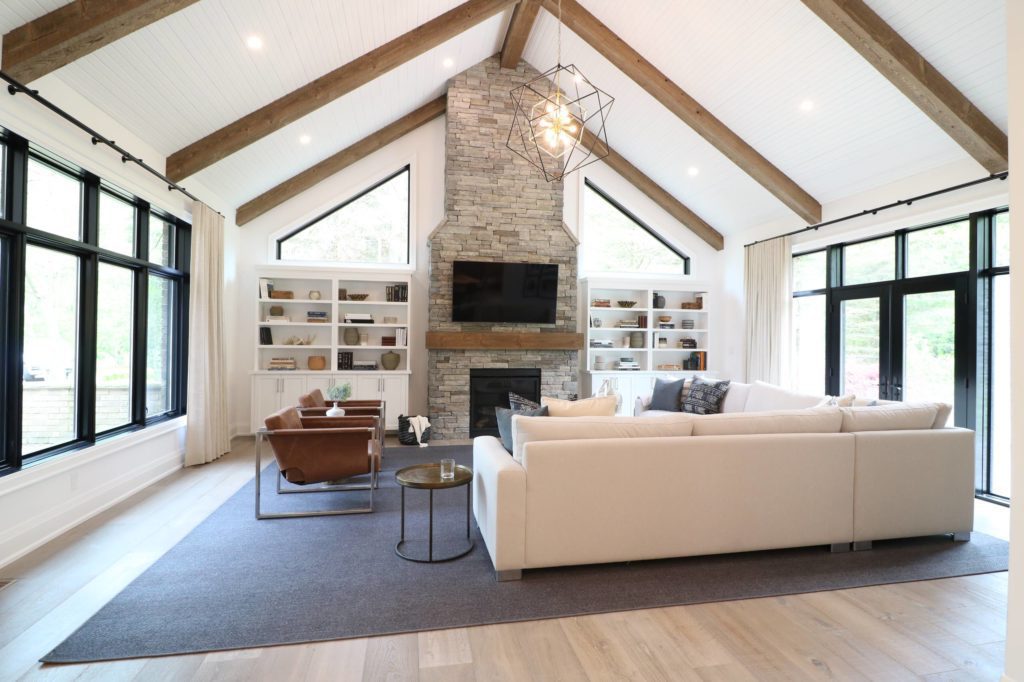Table of Contents
ToggleJaw-Dropping Home Remodeling Project
Are you ready to take your home to the next level? Look no further! This ultimate guide is here to help you plan and execute a jaw-dropping home remodeling project that will leave you in awe of the stunning results. Whether you’re looking to revamp your living room, renovate your kitchen, or transform your entire home, this comprehensive guide has got you covered.
With step-by-step instructions and expert tips, you’ll learn how to define your remodeling goals and create a clear vision for your project. By setting realistic expectations and aligning your desires with the end result, you can ensure that your home reflects your personal style and meets your functional needs.
But wait, there’s more! We’ll also guide you through the process of creating a realistic budget for your remodeling project. Discover effective strategies for prioritizing expenses, finding cost-saving opportunities, and staying on track financially. With our help, you can achieve your dream home without breaking the bank.
Now, let’s talk about finding the right contractors. We know how important it is to work with reliable and skilled professionals who can bring your remodeling vision to life. Learn how to vet contractors, obtain multiple quotes, and negotiate contracts and payment terms. By checking references and reviewing portfolios, you can ensure that the contractors you choose align with your aesthetic preferences and quality standards.

Ready to dive into the design process? We’ve got you covered there too. Explore the key steps and considerations involved in designing your dream space. From creating floor plans to selecting materials, colors, and finishes, we’ll provide you with the guidance you need to make informed decisions and create a space that truly reflects your style.
But what about managing the remodeling process? Don’t worry, we won’t leave you hanging. Learn how to stay organized, communicate effectively with contractors, and handle unexpected challenges that may arise along the way. With our tips and tricks, you’ll be able to navigate the remodeling process with confidence and ease.
So, are you ready to embark on this exciting journey? Get ready to transform your living space into a jaw-dropping masterpiece with the help of our ultimate guide to a home remodeling project.
Setting Your Remodeling Goals
When embarking on a home remodeling project, it’s essential to start by setting clear and realistic goals. This will help you establish a vision for your project and ensure that the end result aligns perfectly with your expectations and desires.
To define your remodeling goals, begin by asking yourself a few key questions. What is the main purpose of your renovation? Are you looking to create more space, improve functionality, or enhance the overall aesthetic appeal of your home? Understanding your objectives will guide your decision-making process throughout the project.
Once you have a clear idea of what you want to achieve, it’s time to create a detailed plan. Consider the specific areas of your home that you want to remodel and identify the changes you want to make. Do you envision a modern kitchen with sleek countertops and state-of-the-art appliances? Or perhaps you dream of a luxurious bathroom retreat with a spa-like atmosphere.
It’s also important to set a realistic timeline for your project. Determine how long each phase of the remodeling process will take and establish a schedule that allows for efficient completion. Remember to factor in any potential setbacks or unexpected challenges that may arise along the way.
By setting your remodeling goals and creating a clear vision for your project, you’ll be well on your way to achieving a stunning transformation that truly reflects your personal style and meets your needs. So go ahead, dream big and let your imagination guide you as you embark on this exciting journey.
Creating a Realistic Budget
Creating a realistic budget is a crucial step in ensuring the success of your home remodeling project. By setting a clear budget from the start, you can prioritize your expenses and make informed decisions about where to allocate your funds. Here are some effective strategies to help you create a realistic budget and maximize your project’s value:
- Define your priorities: Before diving into the budgeting process, identify your priorities for the remodeling project. What are the must-haves and nice-to-haves? This will help you allocate your budget accordingly and focus on what matters most to you.
- Research costs: Take the time to research the costs of materials, labor, and any additional expenses that may arise during the remodeling process. This will give you a realistic idea of what to expect and help you avoid any surprises along the way.
- Get multiple quotes: Don’t settle for the first contractor you come across. Obtain multiple quotes from different contractors to compare prices and services. This will give you a better understanding of the average cost for your project and help you negotiate a fair deal.
- Consider cost-saving opportunities: Look for ways to save money without compromising on quality. For example, you can opt for cost-effective materials or explore alternative design solutions that achieve the same desired outcome.
- Set a contingency fund: It’s always wise to set aside a contingency fund for unexpected expenses or changes in the project scope. This will give you peace of mind knowing that you’re prepared for any unforeseen circumstances that may arise.
By following these strategies, you can create a realistic budget that aligns with your goals and ensures a smooth and successful home remodeling project. Remember, proper budgeting is key to avoiding financial stress and achieving the results you desire.
Choosing the Right Contractors
Choosing the right contractors is a crucial step in ensuring the success of your home remodeling project. These professionals will be responsible for bringing your remodeling vision to life, so it’s important to select reliable and skilled individuals or companies. Here are some valuable tips to help you make the right choice:
- Vet professionals: Before hiring any contractor, take the time to thoroughly vet them. Check their credentials, licenses, and certifications to ensure they are qualified for the job.
- Check references: Ask for references from past clients and take the time to contact them. Inquire about their experience working with the contractor and the quality of their work.
- Review portfolios: Look through the contractors’ portfolios to see examples of their previous projects. This will give you an idea of their style and whether it aligns with your aesthetic preferences.
- Obtain multiple quotes: Don’t settle for the first contractor you come across. Obtain multiple quotes from different professionals to compare prices, services, and timelines.
- Consider communication: Pay attention to how well the contractor communicates with you. Clear and open communication is key to a successful working relationship.
By following these tips, you can ensure that you choose contractors who are reliable, skilled, and capable of bringing your remodeling vision to life. Remember, taking the time to thoroughly vet professionals and obtain multiple quotes will help you make an informed decision and achieve stunning results for your home remodeling project.
Checking References and Portfolios
When embarking on a home remodeling project, it is crucial to thoroughly check references and review contractors’ portfolios. This step is essential in ensuring that the contractors you choose have a track record of delivering work that aligns with your aesthetic preferences and quality standards.
Checking references allows you to gain insights into the contractor’s past performance and reputation. Reach out to previous clients and ask about their experience working with the contractor. Did the contractor meet deadlines? Were they professional and reliable? Did they deliver high-quality work? These are important questions that can help you gauge the contractor’s capabilities and reliability.

In addition to checking references, reviewing contractors’ portfolios is equally important. A portfolio showcases the contractor’s previous projects, giving you a visual representation of their work. Take the time to carefully examine the portfolio and assess whether their style and quality align with your vision for your remodeling project. Look for projects that are similar in scope and design to get a better understanding of the contractor’s expertise in your specific project type.
By checking references and reviewing portfolios, you can ensure that the contractors you choose have a proven track record of delivering exceptional work. This step provides you with the confidence and peace of mind that your remodeling project will be in capable hands, resulting in a stunning transformation of your living space.
Negotiating Contracts and Payment Terms
When it comes to embarking on a home remodeling project, one of the most crucial aspects is negotiating contracts and payment terms with your chosen contractors. This step ensures that both parties are on the same page and have a clear understanding of the project’s scope, timeline, and financial obligations.
Here are some essential tips to help you navigate the negotiation process:
- Establish Clear Timelines: Clearly define the start and end dates of the project, as well as any important milestones along the way. This will help keep everyone accountable and ensure that the project stays on track.
- Define Payment Schedules: Discuss and agree upon a payment schedule that works for both you and the contractor. It’s common to have a down payment at the beginning, followed by subsequent payments tied to project milestones.
- Specify Scope of Work: Make sure the contract clearly outlines the specific tasks and services that the contractor will provide. This includes materials, labor, and any additional services such as cleanup or disposal.
- Include Change Order Procedures: Anticipate the possibility of changes or additions to the original project scope. Establish a process for handling change orders, including how they will be communicated, documented, and priced.
- Discuss Contingency Plans: In case unexpected issues arise during the remodeling process, discuss how they will be addressed and who will bear the responsibility for any additional costs.
Remember, open and transparent communication is key when negotiating contracts and payment terms. Take the time to thoroughly review the contract before signing, and don’t hesitate to seek legal advice if needed. By establishing clear expectations and agreements upfront, you can minimize potential misunderstandings and ensure a smooth remodeling experience.
Designing Your Dream Space
Designing your dream space is an exciting and creative process that allows you to transform your home into a reflection of your personal style and taste. To ensure a successful design, it is important to follow key steps and considerations that will guide you in creating a space that truly feels like home.
The first step in designing your dream space is to create floor plans that outline the layout and flow of each room. Consider the functionality and purpose of each space, and think about how you want to utilize the area. This will help you determine the placement of furniture, fixtures, and other elements.
Once you have a clear vision of your floor plans, it’s time to select materials, colors, and finishes that will bring your design to life. Consider the overall aesthetic you want to achieve and choose materials that complement your style. Whether you prefer a modern, minimalist look or a cozy, rustic feel, selecting the right materials is essential.
When it comes to colors, think about the mood and atmosphere you want to create in each room. Lighter colors can make a space feel more open and airy, while darker colors can add a sense of drama and intimacy. Don’t be afraid to experiment with different color palettes to find the perfect combination for your dream space.
Finishes, such as flooring, countertops, and cabinetry, are the final touches that will bring your design together. Consider the durability, maintenance, and cost of different finishes, and choose ones that not only look beautiful but also fit your lifestyle.
In summary, designing your dream space involves creating floor plans, selecting materials, colors, and finishes that align with your personal style and taste. By following these key steps and considerations, you can create a space that is both functional and visually stunning, turning your house into a place you love to call home.
Managing the Remodeling Process
Managing the remodeling process is a crucial aspect of any home renovation project. It requires careful planning, organization, and effective communication with contractors. By following these tips, you can ensure that your remodeling project runs smoothly and successfully.
Staying organized is key to managing your remodeling process. Create a project timeline that outlines each phase of the project, from demolition to final touches. This will help you stay on track and ensure that tasks are completed in a timely manner. Use a project management tool or a simple spreadsheet to keep track of deadlines, materials, and expenses. By staying organized, you can avoid delays and keep the project moving forward.

Effective communication with contractors is essential for a successful remodeling project. Regularly communicate your expectations, concerns, and any changes that may arise. Maintain an open line of communication and be responsive to their questions and requests. This will help build a positive working relationship and ensure that everyone is on the same page.
Dealing with unexpected challenges is inevitable in any remodeling project. Whether it’s a delay in materials, a change in design plans, or unforeseen issues with the structure, it’s important to remain flexible and adaptable. Have contingency plans in place, such as alternative materials or backup contractors, to minimize the impact of unexpected challenges. Remember to stay positive and focused on the end result.
In summary, managing the remodeling process requires staying organized, communicating effectively with contractors, and being prepared for unexpected challenges. By following these tips, you can ensure a successful and stress-free home remodeling project.
Creating a Project Timeline
Creating a project timeline is an essential step in ensuring the success of your home remodeling project. By outlining each phase of the project, you can effectively schedule and coordinate tasks, keeping everything on track and avoiding unnecessary delays.
To create a detailed project timeline, start by breaking down your remodeling project into smaller, manageable tasks. This will help you visualize the overall scope of the project and identify any dependencies or critical paths that need to be considered.
Once you have identified the tasks, assign realistic timeframes to each one. Be sure to account for potential delays or unexpected challenges that may arise during the remodeling process. It’s better to allow for extra time than to rush through tasks and compromise the quality of the work.
Consider using a visual representation of your project timeline, such as a Gantt chart or a spreadsheet, to help you stay organized and track progress. This will allow you to easily see which tasks are on schedule, which ones are behind, and which ones are completed.
Additionally, it’s important to communicate with your contractors and other stakeholders involved in the project. Keep them informed about the project timeline and any changes or updates that may occur. Regular communication will help ensure everyone is on the same page and can adjust their schedules accordingly.
Remember, creating a project timeline is not a one-time task. It should be regularly reviewed and updated as the project progresses. By continuously monitoring and adjusting the timeline, you can stay on top of any changes or delays and keep your remodeling project on track.
Dealing with Unexpected Challenges
Dealing with unexpected challenges is an inevitable part of any home remodeling project. While you may have carefully planned and prepared, there are always unforeseen circumstances that can arise. It’s important to be prepared and know how to handle these challenges to ensure the success of your project.
One common challenge that homeowners face during a remodeling project is delays. Whether it’s due to weather conditions, material shortages, or unforeseen issues discovered during the construction process, delays can be frustrating. To deal with delays, it’s essential to maintain open communication with your contractors. Regularly check in with them to stay updated on the progress and any potential delays. By staying informed, you can adjust your expectations and plan accordingly.
Budget overruns are another challenge that can occur during a home remodeling project. It’s not uncommon for unexpected expenses to arise, such as hidden structural issues or changes in design preferences. To handle budget overruns, it’s crucial to have a contingency fund set aside. This will allow you to cover any unexpected costs without derailing your entire project. Additionally, regularly review your budget and track your expenses to ensure you’re staying on track.
Design changes are also a common challenge that homeowners may encounter. As you see your project come to life, you may realize that certain design elements don’t work as well as you initially thought. To handle design changes, it’s important to maintain open communication with your contractors and designers. Clearly communicate any changes or concerns you have, and work together to find solutions that align with your vision and budget.
Remember, unexpected challenges are a normal part of the remodeling process. By staying proactive, flexible, and maintaining open communication with your team, you can effectively handle these challenges and ensure the successful completion of your home remodeling project.
Creating a Realistic Budget
When embarking on a home remodeling project, it is essential to set a realistic budget to ensure that your vision can become a reality without breaking the bank. Here are some effective strategies to help you create a budget that aligns with your goals:
- Prioritize your expenses: Determine which aspects of your remodeling project are the most important to you. Whether it’s updating the kitchen, adding a new bathroom, or expanding your living space, prioritize these areas and allocate a larger portion of your budget accordingly.
- Research costs: Take the time to research the average costs of materials, labor, and any additional services you may require. This will give you a better understanding of what to expect and help you make informed decisions when it comes to budgeting.
- Seek cost-saving opportunities: Look for ways to save money without compromising on quality. For example, consider using recycled or repurposed materials, explore different suppliers for competitive pricing, or take advantage of seasonal sales and discounts.
- Get multiple quotes: Obtain quotes from different contractors and suppliers to compare prices and ensure you are getting the best value for your money. Be sure to request detailed breakdowns of costs to avoid any hidden fees or surprises down the line.
By following these strategies, you can create a realistic budget that allows you to achieve your remodeling goals while keeping your finances in check. Remember, it’s important to be flexible and factor in a contingency fund for unexpected expenses that may arise during the project. With a well-planned budget, you can confidently move forward with your remodeling project and bring your dream space to life.
Frequently Asked Questions
- Q: How do I define my remodeling goals?
A: To define your remodeling goals, start by envisioning what you want your space to look like. Consider your needs, preferences, and any specific features you desire. Think about the functionality, aesthetics, and overall atmosphere you want to create. It’s helpful to gather inspiration from magazines, websites, or even by visiting model homes.
- Q: How do I set a realistic budget for my remodeling project?
A: Setting a realistic budget involves careful consideration of your finances and priorities. Start by determining how much you can afford to spend on your project. Research the average costs of similar remodeling projects to get an idea of what to expect. Prioritize your expenses and allocate funds accordingly. Be sure to leave room for unexpected costs that may arise during the project.
- Q: How do I choose the right contractors for my remodeling project?
A: Choosing the right contractors is crucial for the success of your remodeling project. Start by asking for recommendations from friends, family, or neighbors. Check references and portfolios to ensure their work aligns with your vision. Obtain multiple quotes and compare them carefully. Ask about their experience, licenses, and insurance. Trust your instincts and choose contractors who communicate well and understand your needs.
- Q: How do I design my dream space?
A: Designing your dream space involves several steps. Begin by creating floor plans to determine the layout and flow of the space. Consider your lifestyle and how you will use each area. Choose materials, colors, and finishes that match your style and desired ambiance. Don’t be afraid to mix and match elements to create a unique look. Seek inspiration from interior design magazines or consult with a professional designer.
- Q: How do I effectively manage the remodeling process?
A: Effective management of the remodeling process requires organization and communication. Create a detailed project timeline that outlines each phase and sets realistic deadlines. Stay in regular contact with your contractors to ensure everyone is on the same page. Be prepared to handle unexpected challenges by maintaining flexibility and open communication. Keep track of expenses and document any changes or modifications to the original plan.
- Q: What should I do if unexpected challenges arise during the project?
A: Unexpected challenges are common in remodeling projects. Stay calm and communicate with your contractors to address any issues promptly. Discuss possible solutions and assess the impact on your timeline and budget. Stay flexible and be willing to make adjustments if necessary. Remember, the end result will be worth the temporary inconveniences.






